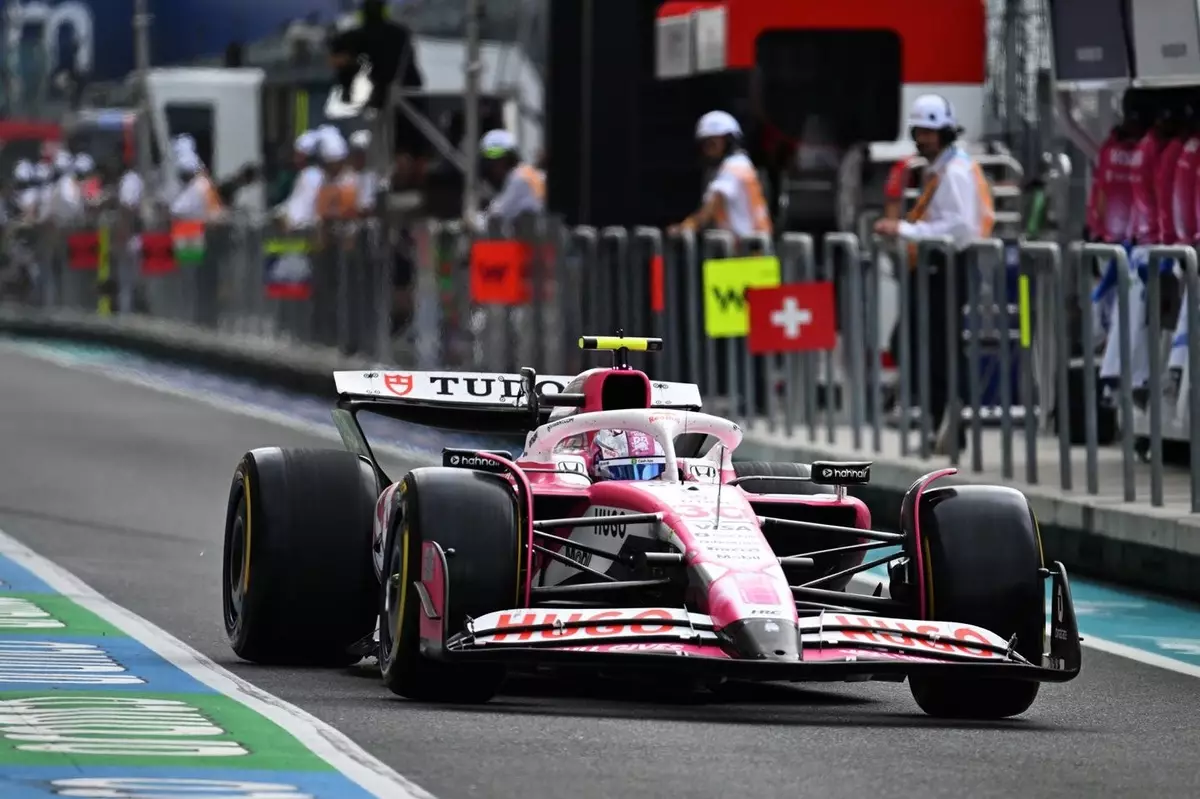The Racing Bulls Formula 1 team is stepping into the spotlight this weekend at the Emilia-Romagna Grand Prix, unveiling an extensive upgrade package that promises to enhance their performance on track. Yet, a closer examination reveals that the anticipated benefits may not be as significant as they initially appear. This marks the team’s first major upgrade for the 2025 F1 season, featuring a newly designed floor and bodywork. Prepared amidst tight timelines and intense scrutiny, the Racing Bulls are acutely aware that the stakes are high—not just for themselves, but across the entire grid, which will also introduce its own modified components.
While the new upgrades represent an essential leap forward for the Racing Bulls, they maintain a cautious stance. Lessons learned from last season, particularly regarding an unfruitful upgrade that hindered their performance, have influenced their decision-making process. Team principal Laurent Mekies emphasized this point: although the volume of parts being introduced may imply a substantial shift, the underlying reality points to a more measured progression.
The Delicate Balance of Development
The intricacies of aerodynamic performance cannot be overstated, particularly when it comes to Formula 1 cars. The floor and bodywork are pivotal to the overall dynamic health of the vehicle, influencing everything from speed to cornering capability. However, mechanical upgrades that exponentially disrupt the balance can lead to unforeseen complications. Mekies’ approach underlines the unsettling reality of modern racing dynamics: while teams vie for every millisecond, even small, incremental improvements can dictate race outcomes in a hyper-competitive midfield.
This tight competition is epitomized in the results observed in previous races. Racing Bulls has oscillated between remarkable finishes and disappointing outings, a fluctuation highlighted by their strong performances in China and Japan, followed by a stark drop in points in Saudi Arabia. Mekies seems to acknowledge that every fraction of a second can be the game-changer, particularly in the tight confines of qualifying, where finishing just a few places higher can vastly improve race possibilities.
A Steady Progression vs. a Leap of Faith
Mekies’ strategy embodies a philosophical dilemma many teams face: the pressing desire for substantial performance advancements against the risk of destabilizing an already complex and sensitive vehicle. He articulated this struggle with a hint of light-heartedness, noting that “there is no large step anymore, not in our world.” His reflections indicate a consensus among teams that tearing apart existing setups in the quest for speed could lead to dire consequences. This rationale manifests in the Racing Bulls’ layered upgrade strategy—one that aims to ease into improvements gradually, rather than taking a reckless gamble on substantial changes.
Looking ahead, the Spanish Grand Prix serves as a pivotal point for Racing Bulls and its competitors. The outcomes there will dictate whether the team should continue ramping up efforts for the current development cycle or pivot focus toward the promising potential of the 2026 season. The tightening regulations regarding components like flexing front wings hint at changing dynamics, making performance assessments essential ahead of the race.
The Road Ahead: A Game of Patience
Navigating the treacherous waters of Formula 1 development requires fortitude and sagacity. As the race weekend approaches, the Racing Bulls find themselves balancing the immediate goals of improvement with the long-term vision that points towards 2026. With Mekies guiding the charge, the team operates under the understanding that the journey is as significant as the destination—every step must be measured, deliberate, and above all, mindful of the complexities of high-level motorsport.
In an arena where the margin for success is vanishingly thin, Racing Bulls aims to emerge not just as participants, but as contenders. By harnessing the lessons of past experiences while treading carefully into the future, they seek to redefine what it means to capitalize on potential in an age where speed is measured in mere milliseconds. The Emilia-Romagna Grand Prix is more than a race; it is a test of strategy, patience, and the pursuit of excellence on the cutting-edge stage of Formula 1.

